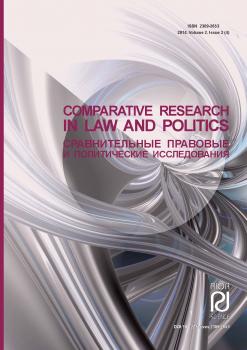В последние десятилетия в области высшего образования наблюдается активный рост мобильности иностранных студентов. В связи с такой тенденцией обсуждается все более возрастающая важность не только глобальных образовательных программ, но и разработки соответствующих визовых режимов и схем для поддержки иностранных студентов. Виза F-1 в США и Aufenthaltstitel для студентов в Германии - это два случая, которые во многом похожи, но в чем-то разнятся. Поскольку Германия является членом Европейского Союза, директивы, выдвинутые на уровне ЕС, значительно влияют на законодательство Германии. Чтобы стало возможным понять порядок, преимущества и (или) недостатки, которые находят в каждой схеме сами студенты, необходимо проанализировать множество аспектов визовых схем. "Это не лучше или хуже, это просто по-другому" - такая фраза справедлива при рассмотрении визового законодательства. Однако для обеих схем важно стремление к идеалам глобализации за счет повышения академической мобильности студентов.
студенческие визы, мобильность студентов,миграция студентов, визовая политика, иммиграционное законодательство, неиммиграционная виза.
Introduction
Throughout the world today there has been an increase in the mobility of students due to the worldwide trend of increased globalization practices. Through the massive technological advances, institutions of higher education worldwide are better able to attract students from other nations to attend their university. In response to this increased call for the internationalization of higher education and the mobility of students, as well as the increasing need for the migration of the highly skilled, nation-states strive to develop appropriate and profitable visa legislations and schemes to support students who wish to study within their borders. The approaches seen in the different nations of the world vary greatly, with some encouraging not only study, but also further migration possibilities, and others put more restrictions on students to remain only for the allotted period of study with the intention that these students will return to their home country postcompletion of their program.
1. European Commission, “Directive on the conditions of admission of third-country nationals for the purposes of studies, pupil exchange, unremunerated training or voluntary service,” (Brussels, 2004) accessed Dec. 29, 2013: http://eur- lex.europa. eu/LexUriServ/LexUriServ.do?uri=OJ:L:2004:375:0012:0018:En:PDF
2. “Proposal for a Directive of the European Parliament and of the Council on the conditions of entry and residence of third-country nationals for the purposes of research, studies, pupil exchange, renumerated and unremunerated training, voluntary service and au pairing” (Brussels, 2013), accessed Dec. 29, 2013: http://eur-lex.europa.eu/LexUriServ/LexUriServ.do?uri=OJ:L:2004:375:0012:001: En:PDF
3. Federal Republic of Germany, “Act on the Residence, Economic Activity and Integration of Foreigners in the Federal Territory,” trans. Language Service of the Federal Ministry of the Interior, (Saarbr cken 2014) accessed Jan. 5, 2014: http://www.gesetze-im-internet.de/englisch_aufenthg/residence_act.pdf
4. Immigration and Customs Enforcement,“SEVIS I-901 FAQ: Who pays - or does not pay - the SEVIS I-901 fee and when is it paid?”, accessed Feb. 10, 2104: http://www.ice.gov/sevis/i901/faq3.htm#_Toc81222012
5. King, Russel and Allan Findley, “Student Migration” In An Introduction to International Migration Studies, edited by Marco Martinello and Jan Rath, 259 - 280, Amsterdam: Amsterdam University Press, 2012.
6. Radu, Dragos and Thomas Straubhaar, “Beyond ‘Push and Pull’: The Economic Approach to Modelling Migration In An Introduction to International Migration Studies, ed. Marco Martinello and Jan Rath, 25 - 55, Amsterdam, Amsterdam University Press, 2012.
7. Robertson, Shanthi, Transnational Student-Migrants and the State: The Education-Migration Nexus. Basingstoke, Palgrave Macmillan, 2013.
8. Söderström, Ola and Shalini Randeria, Didier Ruedin, Gianni D’Amato, Francesco Panese eds. Critical Mobilities. Lausanne: EPFL Press, 2013.
9. United States Bureau of Consular Affairs “Fees for Visa Services,” accessed Jan. 9, 2014: http://travel.state.gov/content/visas/english/fees/fees-visa-services.html
10. “Student Visas,” accessed Jan. 9, 2014: http://travel.state.gov/content/visas/english/study-exchange/student.html#overview
11. United States Government, Immigration and Nationality Act (INA) Act 101 “Definitions,” accessed Jan. 20th, 2014: http://www.uscis.gov/iframe/ilink/docView/SLB/HTML/SLB/0-0-0-1/0-0-0-11261/0-0-0-17197/0-0-0-18003.html
12. Title 8 Code of Federal Regulations Part 214, Section 214.2(f) “Students in colleges, universities, seminaries, conservatories, academic high schools, elementary schools, other academic institutions, and in language training programs, section,” accessed Jan. 20th, 2014: http://www.uscis.gov/iframe/ilink/docView/SLB/HTML/SLB/0-0-0-1/0-0-0-11261/0-0-0-17197/0-0-0-17636.html
13. Title 8 Code of Federal Regulations Part 214, Section 214.2(h) “Temporary Workers,” accessed Jan. 20th, 2014: http://www.uscis.gov/iframe/ilink/docView/SLB/HTML/SLB/0-0-0-1/0-0-0-11261/0-0-0-17197/0-0-0-17636.html
14. United States Department of Homeland Security, “User Manual for School Users of the Student and Exchange Visitor Information System Version 6.10: Volume II Form I-20”, (Washington DC, 2012) accessed Feb. 21, 2014: http://www.ice.gov/doclib/sevis/pdf/School_UM_Vol2.pdf





